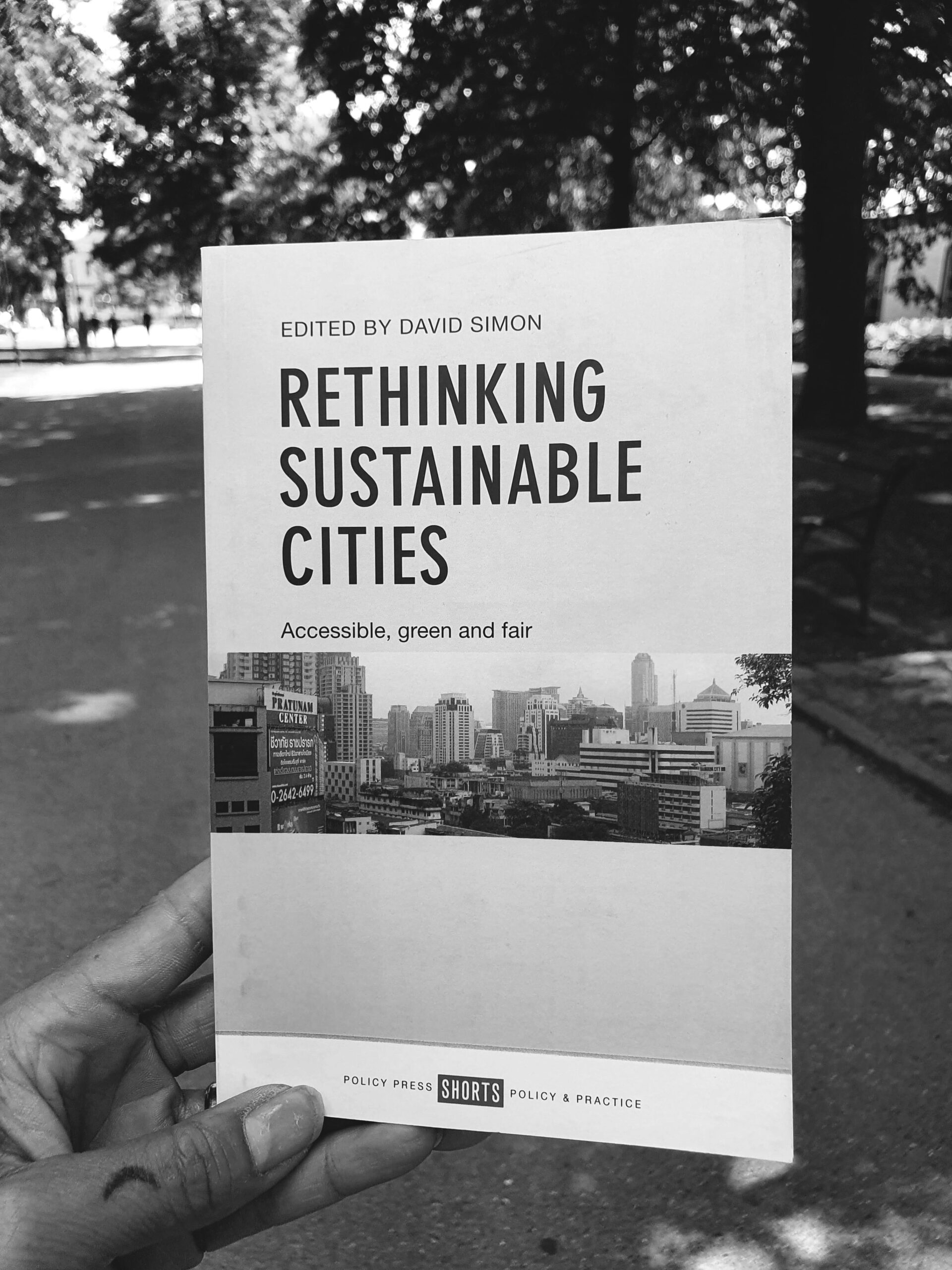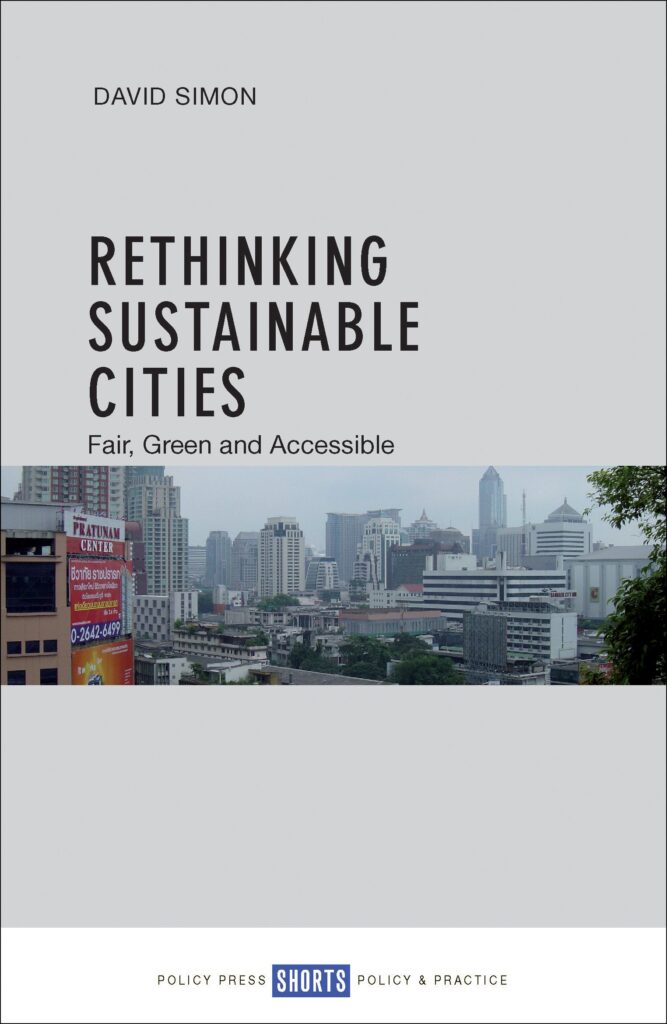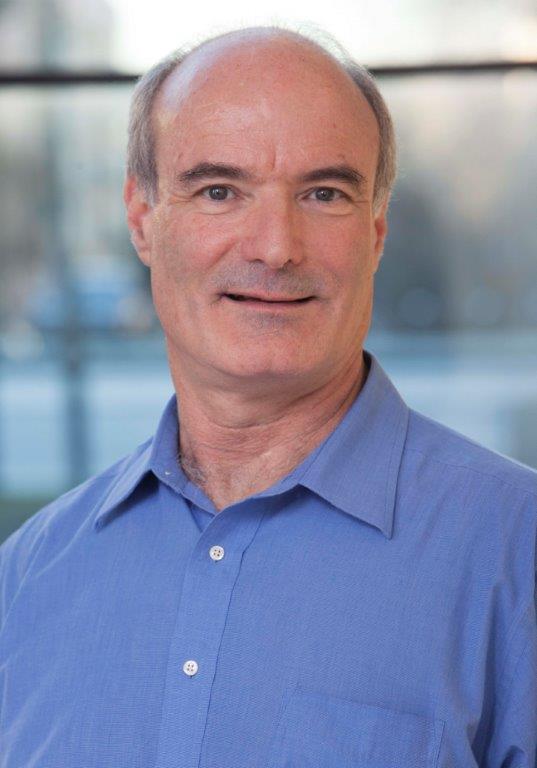“Urban areas can lead or lag in sustainability transitions but ultimately sustainable towns and cities exist only as components of more or less sustainable societies.”
David Simon in ‘Rethinking sustainable cities’

Here at Pedestrian Space this past summer we read Rethinking Sustainable Cities: Accessible, green and fair, edited by David Simon, with whom we were grateful to have an opportunity to interview on the book and its critical focus.
Interview with David Simon
Rethinking Sustainable Cities was published 5 years ago, in 2016. Have you observed any substantial shifts in thought (whether in public discourse, academia, media) since then regarding issues related to sustainable urbanism, including of course those triggered by the COVID-19 pandemic?
Yes, indeed, there has been major progress at many levels, driven by the now almost universally acknowledged understanding of the accelerating urgency of the climate crisis on the one hand, and the ‘demonstration effect’ of the COVID-19 pandemic on the other. The former – amply illustrated by extreme events of increasing frequency and severity around the world, many of which have grabbed news headlines and directly and indirectly affect cities profoundly – have just been carefully documented in the report of Working Group 1 of the IPCC’s Sixth Assessment Report. If there is a silver lining to the ravages of COVID, it is how clearly it demonstrated that urban vulnerability is neither random nor uniform but follows the contours of socio-economic and spatial inequality very closely. Coinciding with various extreme events in different places, these have highlighted the urgency of addressing underlying inequalities as a prerequisite for ‘building back better’ (to quote the favoured slogan of resilience advocates) and hence reducing urban vulnerability and increasing the ability to withstand and recover from future shocks.
As you note in the introduction of Rethinking Sustainable Cities, “Sustainable urbanisation has moved to the forefront of debate, research and policy agendas over recent years”, in large part due to the “rapid urbanisation occurring in many low- and middle-income countries with historically low urbanisation levels.” The concern stems from the fact that “much of this urbanisation is emulating unsustainable resource-intensive patterns from high-income countries.”
What do you perceive as key challenges for sustainable urban development in higher-income countries over the coming decades in contrast to those faced in low and middle-income countries?
The precise ranking of priorities will necessarily vary according to local contexts but in higher-income countries the key priorities centre on reducing inequalities, which are often still substantial even where poverty may be mostly relative rather than absolute, while also reducing average per capita ecological footprints. Business as usual is simply no longer an option. Many incremental, smaller changes have already been made, which means that the larger, more difficult and perhaps expensive step changes are now imperative. One element of this relates to the so-called green/circular economy. Recycling is still inadequate in many contexts and, as several recent scandals have revealed, a considerable portion of material that is sent for recycling by households and firms commonly lands up in landfill or being shipped abroad to low-income countries for processing or dumping – often illegally. This is symptomatic of the minimalist, greenwashing or ‘weak sustainability’ approach. In addition to rapid improvements to recycling, we urgently need to reduce absolute resource use, not least in relation to packaging and other single-use materials. There are promising signs of progress towards refillable containers, reintroduction of deposits on bottles to encourage return for reuse or reprocessing, and even more intricate changes to complex product design to make them easier to dismantle and recycle at the end of their useful life.
Similarly, the current attention to electric vehicles (EV) as the best way to tackle urban air quality by reducing vehicle emissions is important. However, far too little attention is being given to the essential linked investments required in charging points and electricity generation to support mass uptake. Little consideration is yet being given to where and how additional electricity capacity will be generated – if from fossil fuels, this could have a strong overall negative environmental impact. Secondly, the resource costs of EVs are considerable, particularly in relation to the batteries, which constitute a substantial proportion of the cost of EVs. Greatly increased global demand for lithium, copper and other metals is having its own environmental (and geopolitical) impacts in areas where they are mined, refined and transported.
EVs also do not tackle congestion, road safety and other wider urban problems. Indeed, it could be argued that they postpone and impede more structural changes to transport and mobility demand, linked to greater use of better-integrated public and multi-modal transport systems. These ‘strong sustainability’ changes, linked to urban restructuring around a more polycentric or multi-nucleated urban structure – currently being popularised as the 15- or 20-minute city in order to maximise the contribution of walking and cycling within far more multifunctional neighbourhood land uses – probably hold the key to future urban sustainability. Of course, achieving such fundamental change faces many obstacles and therefore requires concerted action by the full range of urban stakeholders, requiring very different approaches and methods from those still used by most planning authorities, to build alliances around perceived shared interests.
“While it might at first seem feasible to make well-resourced, orderly towns and cities in high-income countries more sustainable, changing the entrenched resource-intensive, high consumption economic processes and lifestyles there will require immense effort, finance and political will.”
Rethinking Sustainable Cities: Accessible, green and fair (pg. 3)
Do you have any examples or case studies from Mistra Urban Futures work referencing a city (or cities) in high-income countries whose efforts towards a more sustainable urbanism are exemplary and worth modelling after (where possible)?
Yes, we experimented with many different forms of co-design/-creation/-production among various urban organisations, including municipalities, regional governments, utility providers, universities, private firms and civil society organisations to address shared problems in Gothenburg, Malmö and to a lesser extent Stockholm in Sweden and in Greater Manchester and Sheffield in the UK. These methods must be tailored to the particular situations as part of the confidence-building process to establish common ground, identify respective priorities and build confidence and trust. This takes time and effort; off-the-shelf methods from elsewhere cannot simply be used like a template. However, perseverance has led to many clear gains in relation to challenges as diverse and how best to revitalise the areas and communities around obsolescent railway stations; how to tackle personal safety (especially for women and girls) in and around ‘hostile’ spaces; how to align local sustainability policies and interventions with the Sustainable Development Goals and New Urban Agenda; or the benefits of learning from the experience of counterparts in other cities. These and many other methods from our research platforms around the world are presented, along with explanations of how to adapt them to different contexts, in our new book, Transdisciplinary Knowledge Co-production: A guide for sustainable cities, by K. Hemström, D. Simon, H. Palmer, B. Perry and M. Polk. Rugby: Practical Action Publishing, April 2021. E-book Open Access from https://practicalactionpublishing.com/book/2544/transdisciplinary-knowledge-co-production-for-sustainable-cities.

Mistra Urban Futures was a 10-year programme and centre for knowledge and research on sustainable urban development formed in 2010 that facilitated the co-production of new knowledge between academics, stakeholders and professionals. In what ways was Mistra Urban Futures experimental and groundbreaking?
We pioneered such multi-stakeholder research using formal agreements among the participating organisations, rather than just as voluntary collaborations. The process of securing such arrangements lent commitment, status and resourcing to the activities and subsequent uptake of the results. In the final phase, we pioneered comparative cross-city research with multiple stakeholders, which enabled us to highlight important similarities and differences in priorities, approach and achievements across the diverse city and country contexts. One particularly important dimension of this was the importance attached to mutual peer-to-peer learning across the cities participating in a particular project. The multi-year collaborations provided time and opportunity to share experiences and discuss how to adapt methods to the different situations. All this was only possible because of the 10 years of programme funding from Mistra, Sida and the Gothenburg Consortium of organisations. Importantly too, our funders required both scientific publications and those more appropriate to the various non-academic professional communities of practice and the public, so that we consistently published both the substantive and methodological research results in various formats and outlets, and made the publications available on open access (free of charge) to maximise accessibility worldwide.
Cities and regions of focus at Mistra Urban Futures included Cape Town, Gothenburg, Kisumu, Sheffield-Manchester, Skåne, Stockholm, Shimla and Buenos Aires. How did these cities and regions become the geographic focus for Mistra Urban Futures?
The initial four city platforms, Gothenburg, Greater Manchester, Cape Town and Kisumu, emerged through personal connections and knowledge about existing multi-stakeholder collaborations to foster co-creative practices already underway or in formation. These formed the focus during the first phase until 2015, with research undertaken essentially within each city. From 2016-19, the second phase funding enabled an expansion, which was undertaken to diversify the range of cities and contexts participating in such experimentation and hence the opportunities for learning about what scope for generalisation might exist. This was undertaken by means of a systematic horizon scan to identify potentially appropriate cities and partners. We also deliberately diversified the format of research partnerships, both to save time and to test how well more modest arrangements might be able to undertake the multi-stakeholder research. On this basis, Stockholm, Sheffield, Shimla and Buenos Aires were added.
In the introduction of Rethinking Sustainable Cities, you note the “shared fate of humankind in the face of sustainability challenges.” Did Mistra Urban Futures diverse geographical focus also reflect the interconnectedness of resources, consumption and environmental issues?
Yes, indeed – as explained in the previous answer, the geographical and organisational diversification was deliberate in order to test how widely the approaches we adopted might be suitable and adaptable. The very positive final evaluation by an independent international review panel appointed by our funders attested to how far we succeeded in our aims and ambition, while the efforts we have made to publish the findings and share methods in different formats and categories of outlet around the world, without restrictions of paywalls, reflect our commitment – and those of our funders – to benefit humankind worldwide.
What are your thoughts about the role of media in conveying information about issues of sustainable urban development?
The media play an ever-growing role in spreading information on SUD and all other topics. Increasingly, nowadays, social media and diverse online formats are complementing conventional news media. Indeed, many young people rarely consult conventional media. This also poses challenges in that many outlets and social media are unmoderated and – as we are all too aware now – open to abuse, deliberate mis- and disinformation for political, ideological or any other personal agenda. Profit-driven algorithms designed to maximise ‘hits’ – so-called ‘clickbait’ – often mean that vetting and removal of hate deliberately fake content is inadequate, but there are hopeful signs that this situation is starting to improve. In this context, it becomes ever more important to have and use reliable, fact-checked sources and to ensure that students and the public at large are aware of pitfalls of uncritical use of unverified material and opinions-as-fact.
On a more personal and local note, where do you currently live and how has the pandemic affected local discourse about various sustainability and urbanism themes?
Just outside London, UK, and quite close to Heathrow Airport – where the ongoing controversies over airport expansion via a third runway and associated infrastructure on the one hand, and the immediate impact of the pandemic on jobs, unemployment and vulnerability to COVID-19 on the other, play out very prominently. One of our final activities for Mistra Urban Futures last year was to undertake research on the impact of the pandemic in each of the cities where we worked. This has already been published, and I am currently leading funding applications to undertake new comparative international research on post-pandemic recovery with the respective local authorities in the hope of facilitating efforts to tackle the structural sources of inequality, poverty and vulnerability to future pan- and epidemics, climate change and related sustainability challenges. The UK leg of this work will be undertaken in communities close to the airport which provide much of the un- and semi-skilled labour, and which have suffered severely from the pandemic itself and the associated economic shocks.
What is your perception of the walkability of your local community (or city at large) and changes that can be made to help reduce reliance on cars?
In my own quasi-village community, walkability and cyclability are quite high, although traffic volumes and the inadequacy of cycle lanes do put people off. However, there was an exponential increase in walking and cycling during the pandemic and we are trying to encourage this to continue. Many municipalities created temporary cycle and wider pedestrian access routes, even closing off some residential and commercial roads for the purpose and thus enabling more outdoor eating at restaurants while they had to operate under ‘social’ distancing restrictions indoors. In some cases, these measures are likely to become permanent – not least because of publicity about the impact of vehicle emissions on health, particularly around schools and major pedestrian routes – but elsewhere protests at increased traffic congestion appear to be tipping the balance towards removing them. There are also some encouraging signs that these issues are being linked to wider ‘strong’ sustainability challenges.
Rethinking Sustainable Cities is available to buy as well as available via Open Access and free to download here.

David Simon is Professor of Development Geography and Director for External Engagement in the School of Life Sciences and the Environment, Royal Holloway, University of London. He was also Director of Mistra Urban Futures, Gothenburg, Sweden from 2014–2019. A former Rhodes Scholar, he specialises in cities, climate change and sustainability, and the relationships between theory, policy and practice, on all of which he has published extensively. At Mistra Urban Futures, he led the pioneering methodological research on comparative transdisciplinary co-production. His extensive experience includes sub-Saharan Africa, South and Southeast Asia, the UK, Sweden and USA. He is currently serving as a Commissioner on the international Commission on Sustainable Agricultural Intensification (CoSAI), 2020-21.
His most recent books as author, editor or co-editor are Rethinking Sustainable Cities: Accessible, green and fair (Policy Press, 2016), Urban Planet (Cambridge Univ Press, 2018), Holocaust Escapees and Global Development: Hidden histories (Zed Books, 2019), Key Thinkers on Development (2nd edn, Routledge, 2019), Comparative Urban Research from Theory to Practice: Co-production for sustainability (Policy Press, 2020), and Transdisciplinary Knowledge Co-production for Sustainable Cities: a Guide (Practical Action Publishing, 2021).

